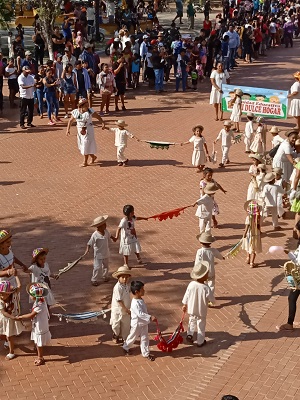
This week, we celebrated the founding of the pueblo (which is the word for both the town and the people of the town) on Ascension Thursday. The fiesta was much longer than that though. It started on Monday and ended on Friday. During that time, there was no school. Most people had off from work Wednesday, Thursday and Friday. It was both a surprise and a joy to experience a week of fiesta (party).
I am sure there are some Catholics thinking - but wait - we celebrate Ascension on Sunday! Well, we did too but the actual feast day is Thursday. The church moves the celebration to Sunday. I didn't mind celebrating it twice!
During the days of fiesta, there were Masses each day. The last three days the Mass was followed by a procession of varying lengths. There were two large parades featuring traditional dancing from the different schools. People of all ages participated. The church was decorated in spectacular fresh floral displays. The church was so full, that there were days the sisters had to bring chairs from the dining room to give space to others. On Thursday, there were two bishops and four priests from all over Bolivia. Here at the convent, we had two days of delicious feasts and enjoyed special treats at all of our meals. 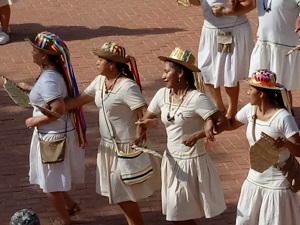 There was extra time at the meals to have long conversations and enjoy each other's company. There was so much happening, that it would take too long to describe it all. For now, I would love to tell you about the dancing!
There was extra time at the meals to have long conversations and enjoy each other's company. There was so much happening, that it would take too long to describe it all. For now, I would love to tell you about the dancing!
Perched high on a balcony, we have perfect viewing of the dancers. Skirts twirling, ribbons dancing, lines and circles formed with feet skip-hopping in joy. Flutes, drums, violins, trumpets, trombones and guitars - different groups but all playing the same song. The dancing continues until each person has passed the church. Full of tradition, stories and love, I am filled with nurturing affection as I embrace the pueblo in prayer for happiness, love and enough of whatever 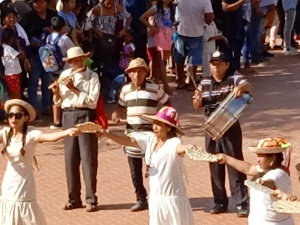 they need. God bless you, Ascención de Guarayos!
they need. God bless you, Ascención de Guarayos!
I was so impressed by the dedication and joy that was part of the traditional dancing. Both days, it was HOT, in the mid-90s with high humidity, and that didn't stop any of the dancing. Traditional of the area, the dancing was full of energy. I would try to describe the dance, but I would not do it justice, so if you are interested in seeing it, you can follow this link to get an idea of what the steps look like. There is a lot of variation in the different routines.
The dress is usually traditional. The women in some groups wear hats with ribbons woven into them. The most common dress is a simple white or creme with green and yellow woven in. Sometimes there are pictures painted on the front. The men 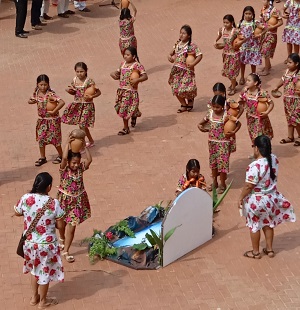 wear simple white shirts and pants and sometimes have patches sewn on them. I noticed that sometimes they cuff their pants a bit higher on one side than the other, but I'm not sure of the significance of it.
wear simple white shirts and pants and sometimes have patches sewn on them. I noticed that sometimes they cuff their pants a bit higher on one side than the other, but I'm not sure of the significance of it.
The dances tell a story. The most traditional story is of fishermen who are fishing and "catch" the women. I am not sure if the women are representing fish or a maiden of the sea. The women then give the men a gift. After receiving the gift, the dancers dance together, which I am sure is them falling in love. Finally, they dance off together. As Disney would say, living happily ever after. For this dance, the men have fishing poles and the women have woven baskets.
On the second day of dancing, there were other stories being told. Each was a tradition they were handed down through dance. For example, one of the dances featured children planting, harvesting and drying rice, turning it into flour, forming it into bread and baking it in an earthen oven (complete with an actual fire I might add).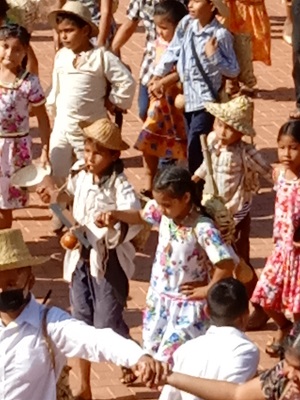
I noticed that tradition is very important here. There is a lot of care and attention taken for not just the older generation to be a part of it, but equally important is handing down those traditions to the youngest generations. I saw this in the dancing, where even the Kindergarten age kids participated. It was also in the processions, where the elders of the community knelt next to Confirmation students in prayer.
Coming from the United States, where tradition is many times scoffed at, and new is what matters most, a place full of marketing and promotion, the honoring of tradition is both a bit new, interesting and comforting to me.
Here, I've seen brooms made out of dried weeds, most cars 30+ years old and working well, mended clothes, and old things like chipped mugs not thrown out but continued to be used. I think that there is something here to be learned about living and simplicity. This kind of honor strikes me as being in line with the honoring of traditions.
Yes, there is poverty here, but that's not the point. As I get to know the people more, I start to see something deeper here. Maybe it's an attitude of respect and care that I 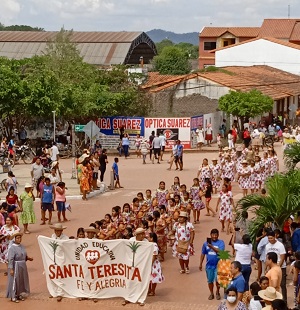 am starting to understand more. Only time will create a more complete picture. Until then, I will honor the people by loving who they are - and their traditions too!
am starting to understand more. Only time will create a more complete picture. Until then, I will honor the people by loving who they are - and their traditions too!
As I get ready for a visit to the United States in about a week, I wonder what life there will look like after my time here. It will be interesting to see how I've changed. Will I live differently after knowing this life or will I settle back into this pace of the US? We will see!
If you would like to be notified when I have new posts, be sure to scroll to the bottom, provide your email address, check the box confirming you are not a robot, click on a few photos to prove it and click Subscribe! You will then receive an email after each new post.

 Many great pardons for waiting so long to post this but there was a fiesta in Yaguarú, and so I spent most of the week there. Since there's no WiFi, I can't write my posts there. Now that I'm back in Ascencion, here is a quick recap of the last couple of weeks!
Many great pardons for waiting so long to post this but there was a fiesta in Yaguarú, and so I spent most of the week there. Since there's no WiFi, I can't write my posts there. Now that I'm back in Ascencion, here is a quick recap of the last couple of weeks!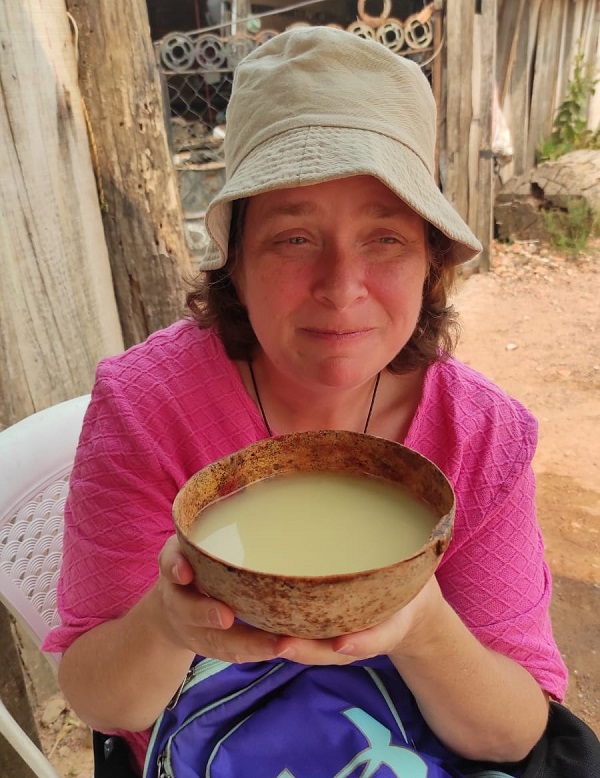 As usual for Yaguarú, the music was incredible at the Masses. Great feasts, including one at the convent for the sisters as well as the priests who co-celebrated the Mass and of course the Bishop, were all there. Roasted pig with lots of delicious food was enjoyed by all. The official fiesta concluded with Mass on Thursday. Music continued all night, every night during the fiesta and through the weekend. It proved a bit much for some, but I am happy to be a sound sleeper so it was all good. Interestingly, on Sunday evening at around 10:30 p.m., the power went out throughout Yaguarú and stayed off until 6 a.m. on Monday. I didn't realize that I could sleep even better with total silence, but it was a great rest!
As usual for Yaguarú, the music was incredible at the Masses. Great feasts, including one at the convent for the sisters as well as the priests who co-celebrated the Mass and of course the Bishop, were all there. Roasted pig with lots of delicious food was enjoyed by all. The official fiesta concluded with Mass on Thursday. Music continued all night, every night during the fiesta and through the weekend. It proved a bit much for some, but I am happy to be a sound sleeper so it was all good. Interestingly, on Sunday evening at around 10:30 p.m., the power went out throughout Yaguarú and stayed off until 6 a.m. on Monday. I didn't realize that I could sleep even better with total silence, but it was a great rest! Ascencion on Monday. It looks scary, I admit, and I wonder how much of it is natural, and how much is because of the changes to the area as more people come to live here.
Ascencion on Monday. It looks scary, I admit, and I wonder how much of it is natural, and how much is because of the changes to the area as more people come to live here.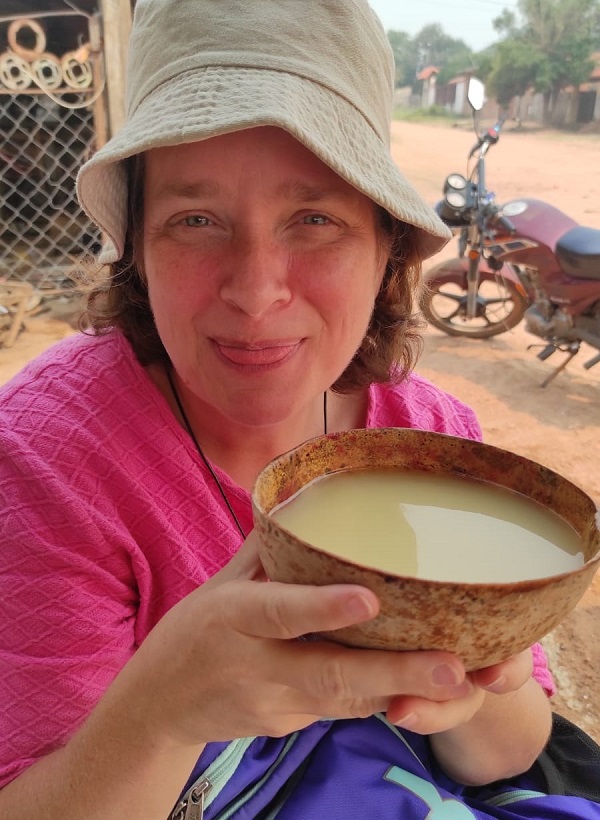 stopped at a roadside stand during our walk one day and enjoyed some Chicha (a drink made from yucca, corn and a bit of sugar - I am sure you remember me talking about it before.) She sent them to me in this order saying how funny my expressions were as I drank it.
stopped at a roadside stand during our walk one day and enjoyed some Chicha (a drink made from yucca, corn and a bit of sugar - I am sure you remember me talking about it before.) She sent them to me in this order saying how funny my expressions were as I drank it.
